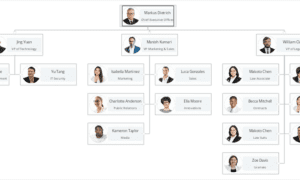As large-scale IT projects continue to face high failure rates, leaders must navigate the complex trade-offs between structured governance and adaptive execution.
The landscape of large-scale IT project management is notoriously difficult. A significant portion of major initiatives fail to meet their original goals, with studies highlighting staggering budget and schedule overruns.
Research published in the Harvard Business Review found that one in six IT projects becomes a ‘black swan’ with an average cost overrun of 200%. This issue is pervasive, affecting both private corporations and public sector initiatives, where some government projects have reported success rates as low as 13%.
In this environment, the strategies employed by project leaders are critical. Rishi Kohli, an IT Project Manager with over a decade of experience leading programs for industries including healthcare, insurance, and telecom, has navigated numerous complex initiatives.
Kohli, a PMP- and CSM-certified professional with an MBA and currently pursuing a Ph.D. in Information Technology, specializes in bridging strategic planning and operational execution. His method of leading high-stakes projects is examined in depth, considering the broader context of industry challenges and varying project management methodologies.
From technical bridge to strategic leader
A common trajectory for project leaders is the evolution from a technical focus to a strategic one. The realization that project success is measured by business impact, not just technical output, necessitates a shift toward structured leadership. Kohli’s career began at this intersection, acting as a liaison between development teams and business units.
“My path into program and project management began during my early consulting years, where I was often the bridge between technical teams and business stakeholders,” Kohli states. “I quickly realized that beyond just delivering code or systems, the real impact came from aligning solutions with strategic goals—and that required structured leadership.”
While this alignment is the objective, it remains a primary point of failure across the industry. “Early experiences managing cross-functional teams and navigating complex client environments taught me the importance of clear communication, risk anticipation, and stakeholder trust. These lessons shaped my approach today: leading with transparency, driving with data, and always balancing innovation with execution.”
Steering multi-million dollar programs with structure and agility
Managing programs valued at up to $150 million involves navigating immense pressure, especially given that large IT projects, on average, run 45% over budget while delivering 56% less value than predicted. A common approach is to establish a robust framework early on.
However, the level of rigidity in such frameworks is a subject of debate, with some advocating for detailed upfront planning and others for more adaptive models.
“To manage the pressure and complexity of high-value programs, I rely on a few core strategies,” Kohli explains. “First, I focus on building a strong structure early — clear scope, aligned stakeholders, and a phased roadmap with well-defined checkpoints.” This structured approach aims to provide clarity and control.
“I also prioritize proactive risk management, using dashboards and early-warning indicators to catch issues before they escalate. By staying transparent with executive sponsors and making data-driven decisions, I maintain control without micromanaging. Ultimately, it’s about balancing strategic oversight with operational agility.” This balance is crucial, as overly prescriptive plans can hinder a team’s ability to respond to the very risks they are designed to mitigate.
Fostering collaboration across global and cultural divides
Modern IT initiatives frequently depend on globally distributed teams, introducing complexities of time zones, cultures, and communication styles. Establishing a cohesive and productive environment requires more than just implementing collaboration software. A shared understanding of the project’s purpose is foundational, but even with a clear vision, cultural nuances can pose significant hurdles to effective teamwork.
“Fostering collaboration across global, cross-functional teams starts with establishing a shared vision and clear communication channels,” Kohli notes. “I make sure everyone understands the ‘why’ behind the work, not just the tasks—this builds ownership across time zones and cultures.”
He points to the use of platforms like Jira and Confluence to maintain alignment. “Most importantly, I focus on relationship-building, encouraging open dialogue and giving teams autonomy while staying available for support. This approach builds trust, drives accountability, and keeps productivity high across geographies.”
However, organizations often find that tools alone cannot solve issues of cultural friction or a lack of psychological safety, which can prevent the open dialogue needed for true collaboration.
Crisis management and strategic resource allocation in practice
No significant project proceeds without encountering major obstacles. Vendor failures, unexpected technical debt, or shifts in business priorities can threaten timelines and budgets.
An essential leadership skill is the ability to manage these crises through decisive action, which often involves difficult trade-offs in resource allocation. This is particularly challenging in organizations already near or past a state of change saturation.
Kohli provides an example from a past project. “One notable instance was during the Verizon Reverse Logistics project at DHL, a $150M initiative spanning eight workstreams and multiple vendors. Midway through, a key automation vendor missed critical milestones, threatening the overall timeline.”
The response involved immediate course correction. “I immediately initiated a focused stakeholder alignment effort—bringing together Verizon, DHL leadership, and vendor teams to re-prioritize deliverables and realign expectations. At the same time, I strategically reallocated internal resources from low-risk areas to high-impact tasks to maintain momentum.”
While effective, such reallocations can introduce new risks, potentially demoralizing teams on deprioritized projects and creating unforeseen downstream consequences.
Blending PMP governance with agile execution
The historical tension between traditional project management (like PMP) and agile methodologies has given way to hybrid models that seek to combine the strengths of both. These models use structured, PMP-style governance for high-level planning and executive reporting, while development teams use agile principles for iterative delivery. However, this blending of philosophies is not without friction.
“My PMP and CSM certifications give me a versatile toolkit to navigate both structured and adaptive project environments,” says Kohli. “The PMP framework strengthens my ability to manage scope, budgets, and risk at the program level, ensuring strategic alignment and stakeholder accountability.”
He contrasts this with his agile training. “Meanwhile, my CSM background helps me lead agile teams with a focus on iterative delivery, continuous feedback, and team empowerment. This hybrid model allows me to deliver complex projects efficiently while adapting to evolving business needs.”
A primary challenge in such frameworks is the misalignment between agile’s rapid cycles and the methodical pace of traditional governance, creating reporting complexities and tension between teams and management.
Orchestrating development in high-stakes regulatory environments
In regulated industries like healthcare and finance, software development must adhere to strict compliance standards such as HIPAA or SOX. Integrating these requirements into the development lifecycle is a significant challenge. One common strategy is to embed compliance and legal experts directly into development teams to ensure continuous alignment.
“In regulated industries like healthcare and insurance, my SDLC strategy emphasizes compliance, traceability, and stakeholder alignment from day one,” Kohli states. “I begin by establishing a clear governance framework—mapping requirements to regulatory standards (like HIPAA or SOX) and embedding compliance checkpoints throughout the lifecycle.” This proactive collaboration is key.
“Collaboration is key: I engage QA, legal, and risk teams early to anticipate constraints and build validation into each sprint or release cycle.” While studies show that embedding regulatory experts can improve efficiency, this approach can also introduce overhead and slow down development, a common point of friction.
To address this, some organizations are turning to emerging trends like Compliance-as-Code (CaC) to automate policy enforcement within the CI/CD pipeline.
Ensuring continuous excellence through feedback and adaptation
Maintaining performance in long-term initiatives requires a system of continuous feedback and adaptation. This typically involves defining Key Performance Indicators (KPIs) tied to business outcomes and using retrospectives to identify areas for improvement. The goal is to create a delivery model that can evolve with shifting business strategies and technological innovations.
“To ensure continuous operational excellence, I focus on creating a feedback-driven delivery model that blends performance monitoring, stakeholder engagement, and innovation scanning,” Kohli says. “I establish KPIs tied to business outcomes and use tools like dashboards and retrospectives to track progress and identify areas for improvement in real time.”
A critical challenge, however, is ensuring that KPIs are meaningful and not simply ‘vanity metrics.’ “On the technology front, I collaborate closely with architecture and engineering leads to assess emerging tools and trends, ensuring we adapt where it adds value.”
The rise of AI-driven KPIs offers a path toward more predictive and prescriptive analytics, but the ultimate success of any measurement system depends on an organization’s ability to act on the data it produces.
The critical lessons for the next generation of project leaders
Experience in managing complex programs often reveals that non-technical skills are as important as mastering technical frameworks. The ability to communicate, build trust across teams, and demonstrate resilience during setbacks are frequently cited as crucial differentiators for successful leaders. The human side of delivery remains a persistent challenge in a field that often promotes individuals based on technical expertise alone.
“Reflecting on my career, one of the most critical lessons I’ve learned is that clarity and communication are more valuable than complexity and control,” Kohli shares. “In complex programs, ambiguity can derail even the best-laid plans—so aligning stakeholders early, managing expectations transparently, and translating strategic goals into actionable workstreams are essential.”
He offers advice for those developing their leadership skills. “For aspiring leaders, my advice is to master both the technical and the human side of delivery. Build a strong foundation in frameworks like Agile and PMP, but never underestimate the power of empathy, trust, and cross-functional collaboration.” This dual focus is critical for navigating the strategic and interpersonal challenges inherent in the role.
Successfully delivering large-scale IT projects requires navigating a series of persistent trade-offs between structure and flexibility, speed and compliance, and central oversight and team autonomy. There are no universal solutions, and the strategies that work in one context may not apply in another.
The approaches discussed here represent one leader’s framework for managing these tensions, highlighting that success in this field is less about finding a perfect methodology and more about the continuous, difficult work of balancing competing priorities.



































